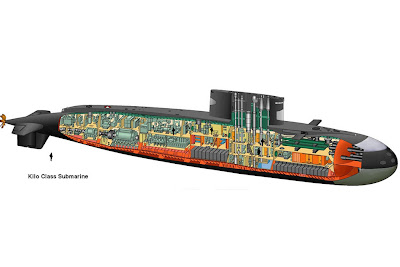 |
| Bangladeshi Frigate confronting Burmese Ships (2008). |
The naval territorial dispute (2008-2011)
between Burma and Bangladesh was not a trivial matter for both nations. Burmese
leaders consider that was Bangladesh’s first step towards far larger strategic
plan to encroach Burma’s territory.
Bangladesh is just over one-fifth of
far larger Burma (55,599 square-miles to Burma's 261,969 square-miles) but nearly three
times more numerous population wise (170 million to Burma's 60 million).
And Buddhist-Burmese do not forget the tragic fact that Bangladesh is slowly sinking and yet her Muslim population still doubling every thirty or forty years thanks to the evil "maximum-4-wives-a-man and minimum-8-childs-per-wife" Islamic practice the norm among poor and backward Islamist-Bangladeshis.
And Buddhist-Burmese do not forget the tragic fact that Bangladesh is slowly sinking and yet her Muslim population still doubling every thirty or forty years thanks to the evil "maximum-4-wives-a-man and minimum-8-childs-per-wife" Islamic practice the norm among poor and backward Islamist-Bangladeshis.
With that in mind Burmese military is
really concerned of Bangladesh’s rapid modernization of its navy and sudden build-up
of BGB (Border Guard Bangladesh) Para-military forces on Burma border. Burmese thinking
is that once Islamists control the government in very-near-future Bangladesh the territorial
breaches now in the form of civilian and militia incursions will turn into
decisive military aggression.
Saudi Arabia and its lapdog OIC are
very public about their long-term ambition to expand the Islamic empire into
Burma and at present they are ruthlessly exploiting the miserable situation of so-called
Rohingyas (The Bengali-Muslim illegals) now trapped between two large armies.
(OIC’s mouthpiece Ban Ki Moon the UNSG has been pressuring Burma’s President
Thei Sein to grant millions of Bengali-Muslim illegals on the border Burmese
citizenship immediately. But knowing what will happen once the Bengali-Muslim camel
has its nose in the Buddhist-Burma’s tent Thein Sein keeps on saying “NEIN” to relentless Ban Ki Moon.)
Bangladesh Navy has been acquiring new
and second-hand frigates including the Hamilton-class frigates from U.S.,
building fast-attack-crafts locally, equipping all her frigates with attack
helicopters including Italian-made AW-109 Power choppers, and purchasing two
Romeo-class submarines from China.
Following is the comprehensive list of
the rapid-modernization-program of Bangladesh Navy as of December 2012:
1. 2x Jianghu-III
guided missile frigate (China),
2. 2x 600 ton large
patrol craft/missile corvette (China),
3. 1x Hydrographic
Survey ship (Indigenous),
4. 1x Fleet
Replenishment Oil Tanker (Indigenous),
5. 2x LCU
(Indigenous),
6. 1x Salvage ship
(Indigenous),
7. 12x Patrol boats
(Indigenous),
8. 3x Harbin Z-9C
Anti-Submarine helicopter (China),
9. C-802 ASM missiles
for 3 frigate and 4 missile boats (China),
10. FM-90N SAM for 3
frigates (China) - already fitted on board BNS Bangabandhu.
11. 2x Type 056
corvette (China)
12. 3x guided missile
frigates in addition to the couple ordered from (China / South Korea),
13. New generation of
light and heavy Torpedoes (EU + China),
14. 2x Submarine (Turkey / Germany /
South Korea / China).
That two submarines and possibly whole
lot of submarines being presently acquired by the Bangladesh Navy is really
worrying the Burmese political and military leaders. And it basically prompted
the recent public visit of SG Min Aung Hlaing and his large military delegation
to Russian military facilities including the St. Petersburg Naval Dockyards.
 |
| Senior-General Min Aung Hlaing and his delegation in Kremlin (June 2013). |
 |
| Chinese Type-039 Romeo-class submarine. |
According to Burmese Naval Intelligence
Bangladesh Navy is presently purchasing two Romeo-class subs from China first and
later more to fill its ambitious submarine program. Even though these Soviet-era
type-633 diesel submarines are notorious as noisy subs many countries like China,
North Korea, Egypt, and Syria navies are still using them with adequate
modifications refitted.
With a crew of nearly 50 including 10
officers a typical Romeo-class sub can carry mines and 533-mm torpedos. Chinese-modified
Romeos known as type-039 can even fire anti-ship missiles from its torpedo
tubes. For a country like Bangladesh they are perfect as patrol-subs defending
deep but short coast line in the Bay of Bengal.
In addition to Burma’s potential-enemy
Bangladesh, Burma’s next door neighbour Thailand is also known to have plans to
purchase German Dolphin-class submarines with the capability to fire cruise
missiles from its torpedo tubes.
Foxtrot-class Or Even Kilo-class Better Subs for Burma Navy?
In early 2010 Burma Navy had a secret submarine
training program on Indian Navy’s Foxtrot-class submarine INS Vela. Even the
opposition exile media then wrote about Burma Nave acquiring two subs of INS
Vela type from Russia.
Foxtrot-class subs made their name
during the famous Cuban-missile crisis in 1960s and are better submarines than
Bangladesh Navy’s Romeo-class subs. It can travel longer range than Romeos and
thus more suitable for the much longer coast line of Burma.
Burma could even go for the Kilo-class
better submarines if Burma Navy wants to get much ahead of Bangladesh Navy. A
Kilo-class sub armed with 18 torpedos and 8 surface-to-air missiles have a
cruising range of 400 miles, underwater speed of 20 knots, and ability to
patrol for 45 days.
But with a crew larger than 50 and the
variations in Burma’s coastal conditions the Kilo-class subs will face much
opposition from most Burmese naval strategists as it is not suitable for the
island-dotted Tanintharyi coast even though it is perfect for the deep western waters
by the Arakan and large waters off the Irrawaddy Delta.
 |
| A Kilo-class sub at sea. |
 |
| Foxtrot-class sub INS Vela at sea. |
 |
| INS Vela of Indian Navy. |
 |
| A German Dolphin-class sub at sea. |
 |
| A Russian Kilo-class sub at dock. |
Naval Arms Race Between Burma and Bangladesh
Population Explosion In Bangladesh





